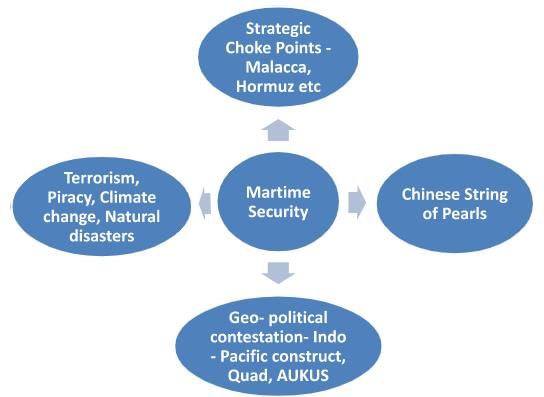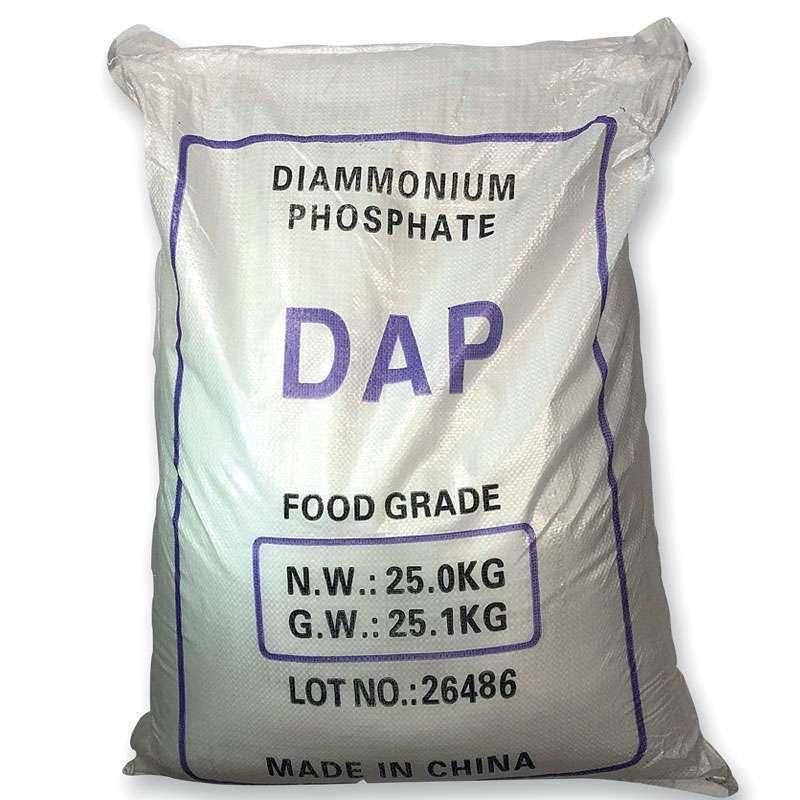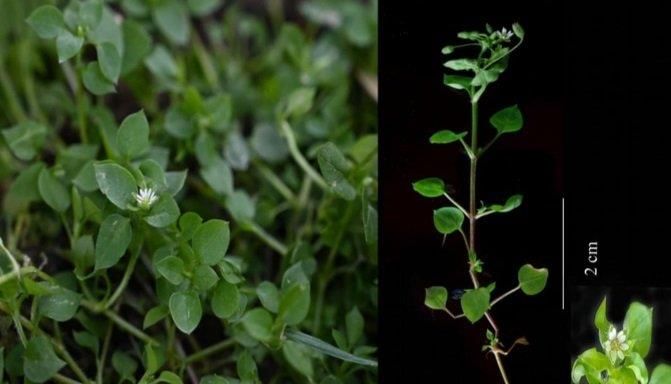UPSC Daily Current Affairs: 2nd January 2025 | Current Affairs & Hindu Analysis: Daily, Weekly & Monthly PDF Download
GS3/Economy
Crop Insurance Scheme Gets Rs 69,515 Crore Boost
Source: Indian Express
Why in News?
The Union Cabinet, chaired by Prime Minister Narendra Modi, has approved the extension of the Pradhan Mantri Fasal Bima Yojana (PMFBY) and the Restructured Weather-Based Crop Insurance Scheme (RWBCIS) through 2025-26. These schemes have been allocated an enhanced budget of ₹69,515.71 crore for the period from 2021-22 to 2025-26.
- The PMFBY and RWBCIS aim to provide financial protection to farmers against crop failures due to natural disasters.
- Premium rates for farmers are set at 2% for Kharif crops and 1.5% for Rabi crops.
- The schemes promote the use of technology for efficient crop insurance management.
- Continuity of these schemes is crucial for enhancing agricultural sustainability in India.
Additional Details
- Pradhan Mantri Fasal Bima Yojana (PMFBY): Launched in 2016, this scheme provides insurance coverage for farmers against crop loss due to natural calamities, pests, and diseases. It has replaced previous schemes like the National Agricultural Insurance Scheme (NAIS) and aims to stabilize farmers' income and encourage modern agricultural practices.
- Uniform Premium Rates: Farmers will pay a uniform premium of only 2% for Kharif crops and 1.5% for Rabi crops. For annual commercial and horticultural crops, the premium is set at 5%.
- Area-Based Approach: The scheme operates on an 'Area Approach basis,' defining specific areas for each notified crop, ensuring that all insured farmers in a unit of insurance face similar risks.
- Technology Usage: The incorporation of technology includes using smartphones for data capture and remote sensing to enhance the accuracy of yield estimation and expedite claim processes.
- Eligibility: The scheme is now voluntary for all farmers growing notified crops in notified areas, expanding coverage to many previously excluded groups.
- Restructured Weather-Based Crop Insurance Scheme (RWBCIS): Introduced in 2016, this scheme protects farmers against weather-induced financial losses, covering various conditions like rainfall and temperature extremes.
The continuation of the PMFBY and RWBCIS until 2025-26, coupled with an increased budget and technological advancements, is expected to significantly enhance the risk coverage for farmers across India, ultimately aiming to stabilize the agricultural sector.
GS3/Science and Technology
Tinnitus Diagnosis and Management Device Developed at IIT Bombay
Source: The Hindu
 Why in News?
Why in News?Researchers at the Indian Institute of Technology (IIT) Bombay have created an affordable device aimed at diagnosing and managing tinnitus, a condition that affects many individuals and can significantly impact their quality of life.
- The device offers a comprehensive solution for tinnitus diagnosis and management.
- It features precise tinnitus matching to identify the specific sound frequency experienced by patients.
- The accompanying application allows for a customizable and multimodal treatment approach.
- Tools for tracking disease progression are included, enabling clinicians to monitor patient improvements over time.
Additional Details
- Tinnitus: It is the perception of sound without an external source, primarily heard by the affected individual alone.
- Causes: Commonly arises from age-related hearing loss, ear injuries, or circulatory system issues.
- Symptoms: May include sleep disturbances, depression, anxiety, and irritability, affecting mental health and social interactions. Patients often report hearing phantom noises such as buzzing, roaring, or clicking.
- Treatment Options: Can involve hearing aids, sound-masking devices, medications, and coping strategies to manage noise perception.
- Device Features: The newly developed device, along with its software, supports a personalized treatment experience, adapting to each patient's unique condition.
This innovative device represents a significant advancement in tinnitus management, offering new hope for effective diagnosis and treatment tailored to individual needs.
GS2/Governance
UDISE Data Reveals Shift in Education Trends
Source: Times of India
Why in News?The recent UDISE+ report indicates a significant decline in student enrollment in schools, marking the first drop in many years. In the academic years 2022-23 and 2023-24, the enrollment fell by over one crore students compared to the previous four-year average of approximately 26 crore students.
- Enrollment figures dropped to 25.17 crore in 2022-23 and further to 24.8 crore in 2023-24.
- This decline represents a total decrease of about 1.55 crore students, which is nearly 6% compared to the 2018-19 to 2021-22 period.
Additional Details
- About UDISE+: The Unified District Information System for Education (UDISE) Plus is a platform managed by the education ministry for gathering school-related data nationwide. UDISE+ is responsible for collecting data from all recognized schools offering formal education from pre-primary to class XII.
- Schools successfully registered on UDISE+ receive a unique UDISE Code, serving as a national identifier. The system collects comprehensive data through an online Data Collection Form (DCF), which includes various parameters such as school infrastructure, teacher statistics, enrollment figures, and examination results.
- Drop in Numbers: Officials from the ministry have confirmed that the decline in enrollment is partly due to revised data collection methods introduced in 2022-23. The new protocol requires schools to provide detailed, student-specific information rather than simple aggregate numbers, ensuring accuracy in reporting.
This change in enrollment data collection signifies a shift towards more precise tracking of student demographics, which may impact future educational policies and strategies aimed at improving enrollment and educational quality.
GS2/International Relations
Russian Gas Exports to Europe via Ukraine Halted as Transit Deal Expires
Source: Economic Times
 Why in News?
Why in News?On New Year’s Day, Russian natural gas exports to Europe via the Soviet-era pipelines through Ukraine were halted due to the expiration of the transit deal, with no agreement reached between Moscow and Kyiv. This cessation marks the end of Russia's oldest gas route to Europe, which Ukraine justified as a necessary measure for national security amidst ongoing military conflict.
- The Urengoy-Pomary-Uzhgorod pipeline is a major route for Russian gas exports to Europe.
- Russia's gas exports to Europe have significantly declined, from controlling 35% of the market to just 8%.
- The EU has diversified its energy sources in response to reduced Russian gas supplies.
Additional Details
- Urengoy-Pomary-Uzhgorod Pipeline: This pipeline transports gas from Siberia through Sudzha in Russia's Kursk region, flowing through Ukraine to Slovakia, and branching into the Czech Republic and Austria.
- Impact on Gas Transit: By December 2024, the EU received less than 14 bcm of gas via Ukraine, a sharp decline from 65 bcm/year in 2020, indicating a significant reduction in dependency on Russian gas.
- Economic Losses: Ukraine faces a loss of $800 million annually in transit fees, while Gazprom could lose around $5 billion in gas sales.
- Market Changes: EU gas prices peaked in 2022 but are not expected to reach those highs again due to reduced reliance on Russian gas.
- Alternative Routes: Russia continues to export gas via the TurkStream pipeline, supplying countries like Turkey, Hungary, and Serbia.
This situation illustrates the shifting landscape of energy supplies in Europe, with countries increasingly looking to diversify their energy sources to mitigate the loss of Russian gas. The implications for both Russia and Europe are significant, influencing economic and geopolitical dynamics in the region.
GS3/Defence & Security
Challenges Faced by Coastal Security Scheme
Source: New Indian Express
 Why in News?
Why in News?Thirteen coastal states and Union Territories have reported significant challenges related to the Coastal Security Scheme (CSS), including non-operational patrol boats, insufficient funds for training, and shortages in manpower.
- Non-functional patrol boats and funding shortages are critical issues.
- The Coastal Security Scheme aims to enhance security along India's extensive coastline.
- Upcoming Phase III plans to address existing gaps in infrastructure and resources.
Additional Details
- Coastal Security Scheme: Launched to strengthen security along India’s 7,516.6 km coastline and 1,382 offshore islands, aiming to prevent unauthorized entries, smuggling, and infiltration.
- Implementation Phases:
- Phase I (2005–2011): Budget of ₹646 crore established numerous coastal police stations, check-posts, and patrol vessels.
- Phase II (2011–2020): Budget of ₹1,579.91 crore expanded infrastructure with additional police stations and patrol boats.
- Phase III (Upcoming): Focuses on maintenance, manpower shortages, and equipment upgrades.
- Key Features:
- Infrastructure Development: Includes construction of essential facilities such as police stations and jetties.
- Marine Patrolling: Provision of interceptor boats for rapid response to incidents.
- Manpower & Training: Specialized training for marine police at the National Academy of Coastal Policing in Gujarat.
- Technological Integration: Real-time monitoring through collaboration with the Indian Coast Guard’s Coastal Surveillance Network.
- Objectives: To enhance maritime security through improved resources, coordination among agencies, and effective surveillance.
- Phase III Plans:
- Introduction of upgraded boats and equipment with better maintenance contracts.
- Increased recruitment and specialized training programs for personnel.
- Expansion of infrastructure with new operational centers and jetties.
- Insurance proposals for marine police personnel to ensure their safety.
In conclusion, addressing the identified challenges is crucial for the effectiveness of the Coastal Security Scheme, which plays a vital role in safeguarding India's maritime boundaries.
GS3/Environment
Central Groundwater Board (CGWB)
Source: PIB
 Why in News?
Why in News?As of 2023, the Central Groundwater Board (CGWB) has reported that there are 440 districts in India with excessive nitrates in their groundwater. This marks an increase from 359 districts in 2017, highlighting a growing concern regarding groundwater quality in the country.
- The CGWB is a multi-disciplinary organization under the Ministry of Jal Shakti.
- It serves as the National Apex Agency for groundwater management in India.
- CGWB is tasked with monitoring and regulating groundwater resources.
Additional Details
- Organization Overview: CGWB is a scientific organization that includes experts such as Hydrogeologists, Geophysicists, Chemists, Hydrologists, Hydrometeorologists, and Engineers.
- Headquarters: The headquarters is located at Bhujal Bhawan, Faridabad, Haryana.
- Major Activities:
- National Aquifer Mapping and Management (NAQUIM) for preparing aquifer maps.
- Conducting groundwater explorations to identify potential aquifers.
- Performing geophysical surveys to locate groundwater bearing zones.
- Monitoring groundwater levels and quality using observation wells.
- Disseminating groundwater data and knowledge.
- Utilizing GIS and Remote Sensing technologies.
- Regulating groundwater development in coordination with state governments.
- Conducting R&D studies and applying new technologies for groundwater management.
- Promoting water conservation and artificial recharge initiatives.
- Building capacity and transferring knowledge in the groundwater sector.
The CGWB plays a critical role in ensuring the sustainable management of groundwater resources in India, focusing on exploration, conservation, and protection from pollution to enhance both economic and ecological efficiency.
GS3/Defence & Security
Commissioning of New Naval Vessels: INS Surat, INS Nilgiri, and INS Vagsheer
Source: PIB
 Why in News?
Why in News?The Indian Navy is set to enhance its maritime defense capabilities with the commissioning of three major platforms: the guided-missile destroyer INS Surat, the stealth frigate INS Nilgiri, and the diesel-electric submarine INS Vagsheer next month.
- INS Surat is a stealth destroyer and the last of Project-15B.
- INS Nilgiri is the first of seven multi-role frigates under Project-17A.
- INS Vagsheer is the final submarine of the first batch of Kalvari-class submarines.
Additional Details
- INS Surat:
- It is designed in-house by the Indian Navy’s Warship Design Bureau and constructed by Mazagaon Dock Limited (MDL).
- Features an indigenous content of 72%.
- First AI-enabled warship, enhancing operational efficiency.
- Displacement of 7,400 tons with a length of 163 meters and a top speed of nearly 60 km/h.
- Maximum operational range of 15,000 km.
- Armed with supersonic BrahMos missiles and Barak-8 medium-range surface-to-air missiles.
- Equipped with indigenously developed anti-submarine weapons, including hull-mounted Sonar Humsa NG.
- INS Nilgiri:
- First of seven multi-role frigates under Project-17A, with four being constructed at MDL and three at GRSE in Kolkata.
- Constructed at MDL, displacing 6,670 tons.
- Incorporates advanced weaponry and sensors for anti-submarine, anti-ship, and anti-aircraft defense.
- Features stealth technology for reduced radar signature.
- Can operate independently and serve as the flagship of a naval task force.
- INS Vagsheer:
- Sixth and final submarine of the first batch of Kalvari-class submarines.
- Named after a deep-sea predator in the Indian Ocean.
- Designed by French naval defense group Naval Group and manufactured by MDL.
- Capable of operating in various theaters, showcasing interoperability with other naval components.
The commissioning of these vessels marks a significant advancement in the Indian Navy's capabilities, affirming India's commitment to strengthening its maritime defense and enhancing operational readiness.
GS3/Science and Technology
What is Belly Landing?
Source: Indian Express
Recently, a tragic incident occurred where Jeju Air flight 7C2216 made a belly landing in South Korea, resulting in the loss of 179 lives. This incident has brought attention to the emergency landing technique known as belly landing.
- Belly landing, also referred to as a gear-up landing, is an emergency technique used when an aircraft cannot extend its landing gear.
- This type of landing is considered a last resort for pilots facing a mechanical failure.
- Belly landings can cause significant damage to the aircraft and pose risks to passengers and crew due to potential injuries and fires.
Additional Details
- Belly Landing: This emergency landing technique involves an aircraft landing on its fuselage instead of its landing gear. It is executed under circumstances where the landing gear fails to deploy, or when a pilot deems it safer to land this way, such as in a field or during ditching.
- Ditching: This term refers to an emergency landing on water. It is another scenario where belly landings may occur when an aircraft cannot safely land on a runway.
- Landing long and fast: An aviation term indicating that an aircraft touches down beyond the designated touchdown zone at a speed exceeding the recommended landing speed, leaving less distance to stop.
In conclusion, belly landings are critical emergency procedures that require careful consideration by pilots. Understanding these techniques can enhance safety protocols in aviation.
GS3/Economy
What is Di-Ammonium Phosphate (DAP)?
Source: Economic Times
 Why in News?
Why in News?The Union Cabinet has recently approved the extension of the One-time Special Package for Di-Ammonium Phosphate (DAP) beyond the existing Nutrient Based Subsidy (NBS) scheme. This decision highlights the significance of DAP in agricultural practices and its impact on farmers.
- DAP is one of the most widely used fertilizers globally.
- It provides essential nutrients, specifically nitrogen (N) and phosphorus (P), for plant growth.
- It is the second most commonly used fertilizer in India after urea.
Additional Details
- High in Phosphorus (P): DAP stimulates root establishment and development, which is crucial for normal plant growth and maturation.
- Highly Soluble: DAP dissolves quickly in soil, releasing plant-available phosphate and ammonium.
- Additional Uses:DAP serves multiple industrial purposes, including:
- As a fire retardant, preventing forest fires when mixed with other ingredients.
- In various industrial processes like metal finishing.
- As an addition to wine to sustain yeast fermentation.
- As an additive in milk to produce cheese cultures.
- As a flux for soldering metals such as tin, copper, brass, and zinc.
In summary, Di-Ammonium Phosphate (DAP) plays a critical role in agriculture by providing essential nutrients for plant growth and has various industrial applications. The recent approval of a special package for DAP underlines its importance for farmers and the agricultural sector.
GS3/Environment
Discovery of a New Plant Species: Stellaria bengalensis
Source: The Hindu
 Why in News?
Why in News?A new plant species named Stellaria bengalensis has been identified by researchers from the Centre for Advanced Studies in Botany at North-Eastern Hill University, Shillong. This discovery adds to the biodiversity of the region and highlights the importance of conservation efforts.
- S. bengalensis is an annual herb of the genus Stellaria (family Caryophyllaceae).
- It was discovered in the Sangser forest, Kalimpong, at altitudes between 2,245 to 2,450 metres.
- This species grows to a height of 8 to 10.5 cm and features distinctive white flowers.
- The flowering and fruiting period for this plant occurs from May to September.
Additional Details
- Habitat: S. bengalensis thrives on muddy soil slopes in mountainous regions.
- Characteristics: The plant is notable for its absence of bracts, shorter petals that are included within the sepal, and sharp, pointed seeds.
- India is home to approximately 22 species of Stellaria, predominantly found in the Himalayan region.
- The new species has been preliminarily assessed as data deficient according to the criteria of the International Union for Conservation of Nature (IUCN).
- Another related species, Stellaria mcclintockiae, was found in the Nelliyampathy Hills of Kerala.
This discovery underscores the rich biodiversity of India and the need for ongoing research and conservation to protect these unique species.
|
39 videos|4393 docs|930 tests
|
FAQs on UPSC Daily Current Affairs: 2nd January 2025 - Current Affairs & Hindu Analysis: Daily, Weekly & Monthly
| 1. What is the significance of the Rs 69,515 crore boost to the Crop Insurance Scheme? |  |
| 2. How does the new tinnitus diagnosis and management device developed at IIT Bombay work? |  |
| 3. What trends in education have been revealed by the UDISE data? |  |
| 4. What are the implications of the halted Russian gas exports to Europe via Ukraine? |  |
| 5. What are the main challenges faced by the Coastal Security Scheme in India? |  |
|
39 videos|4393 docs|930 tests
|



















